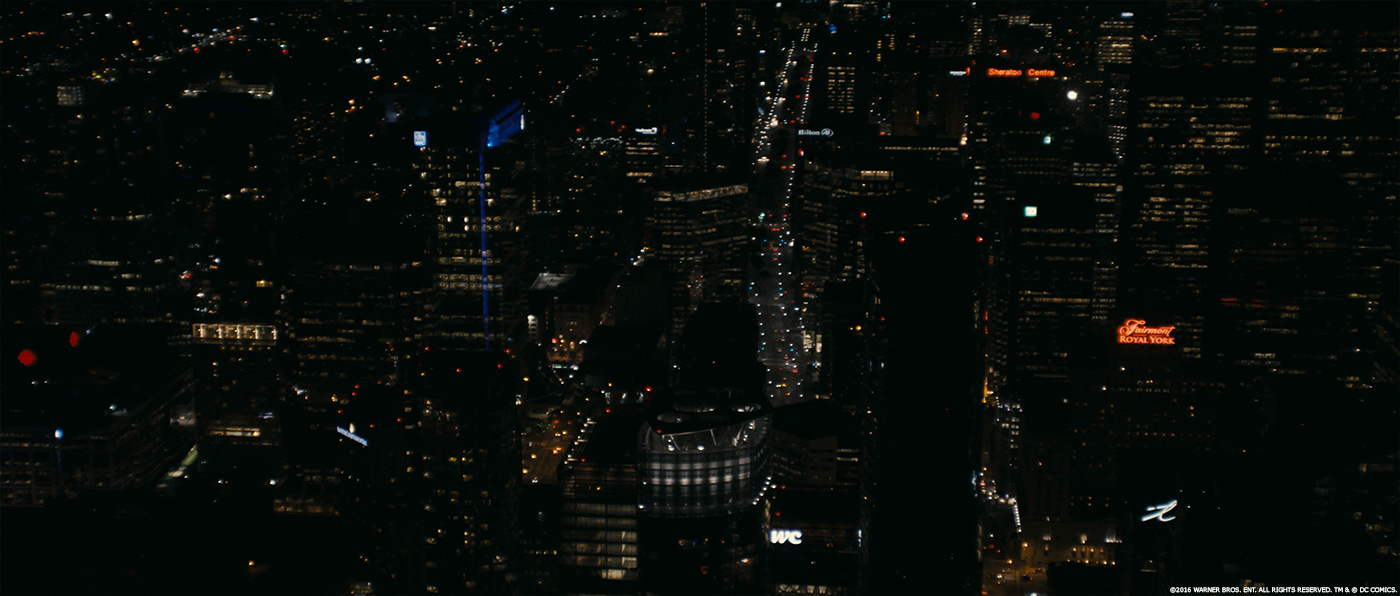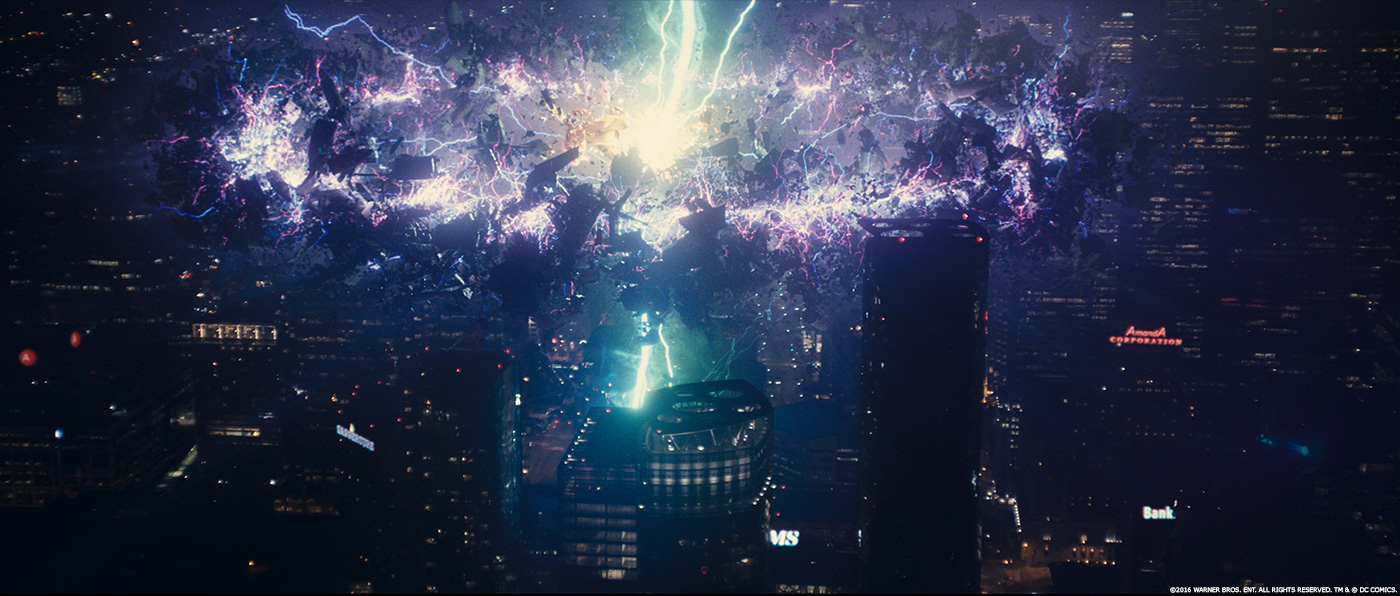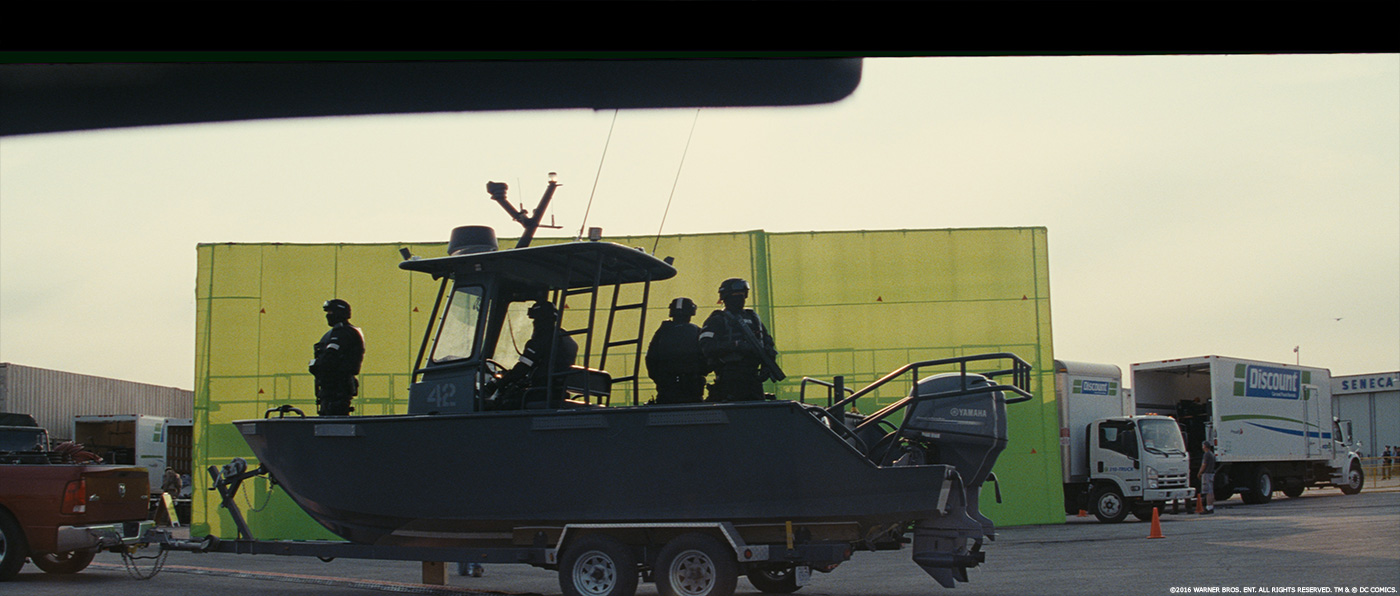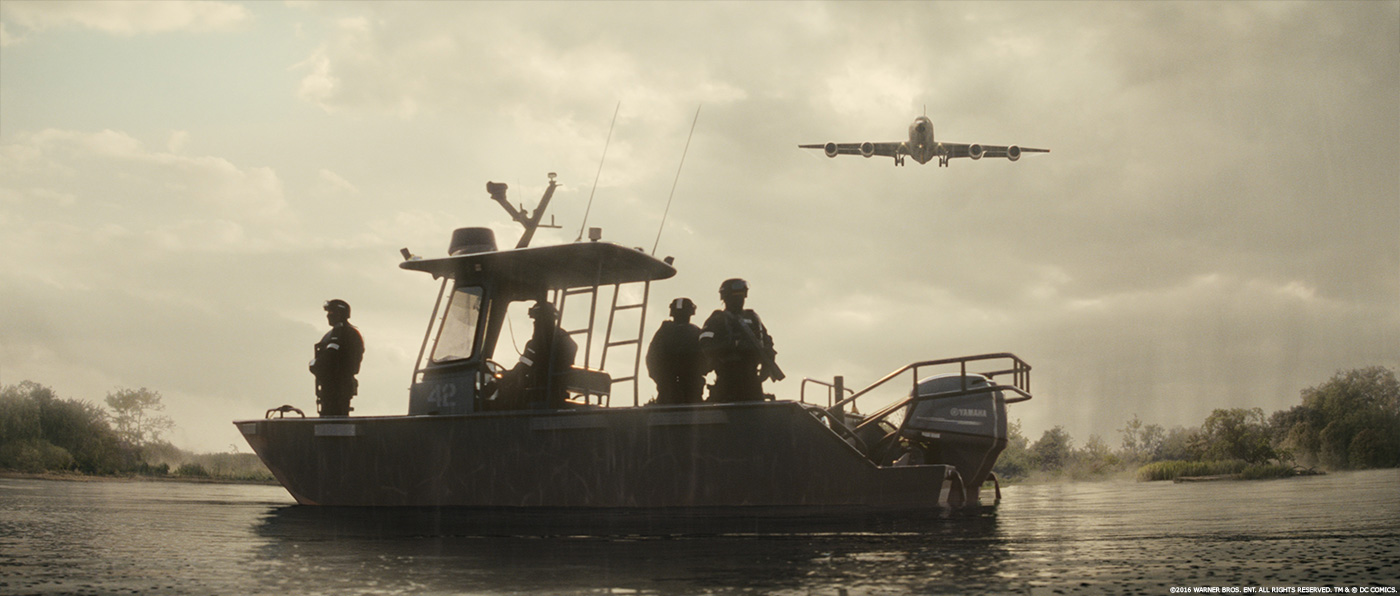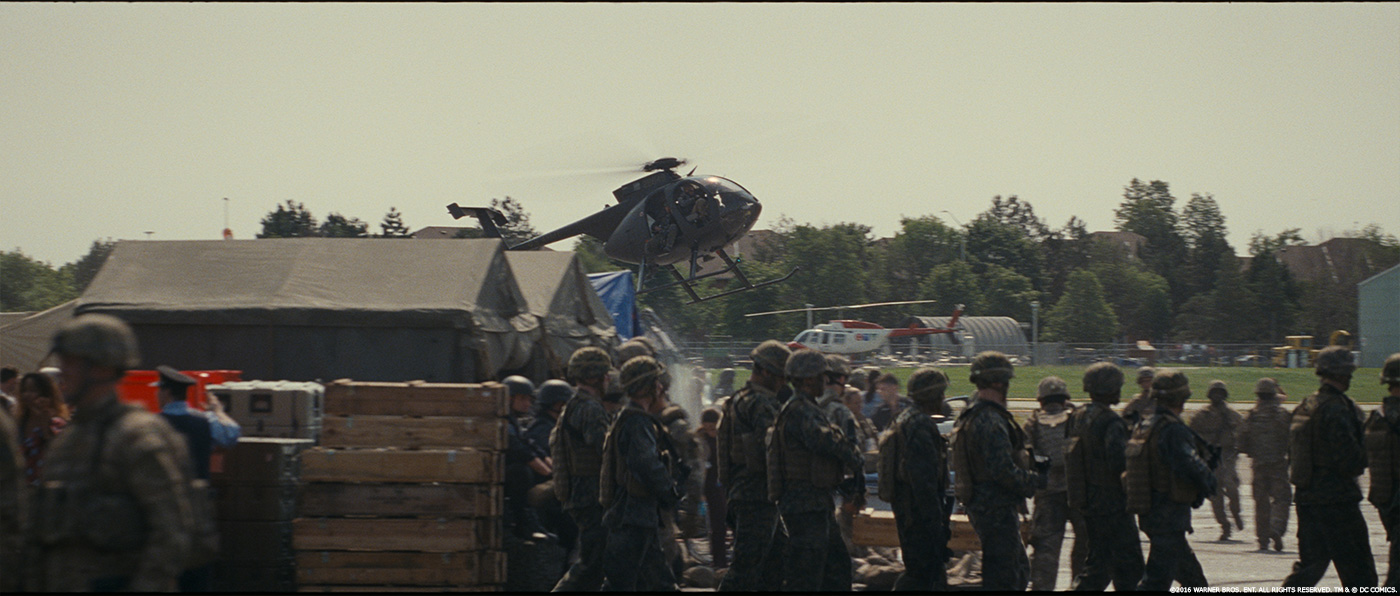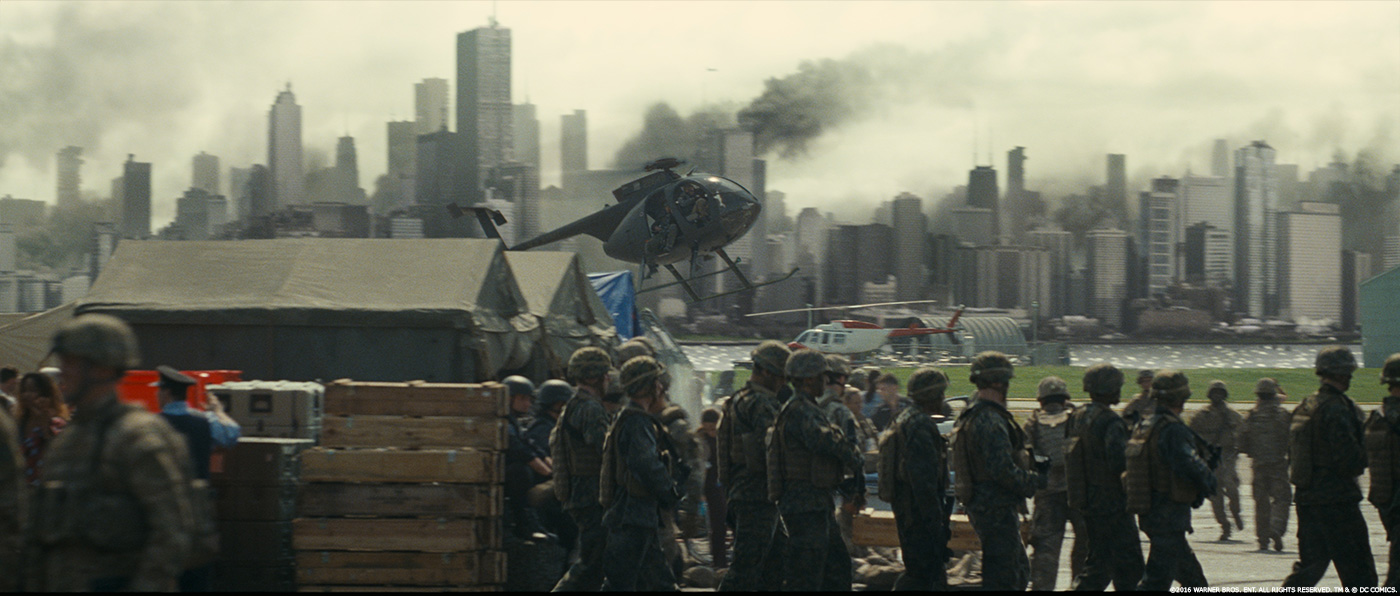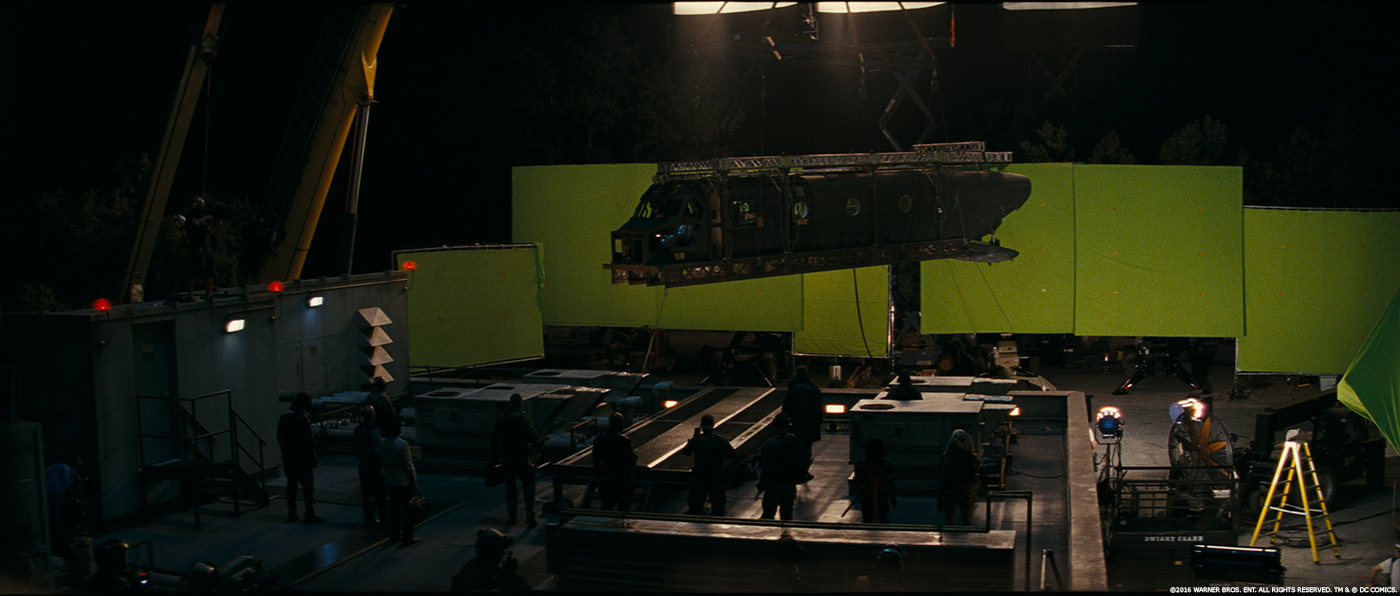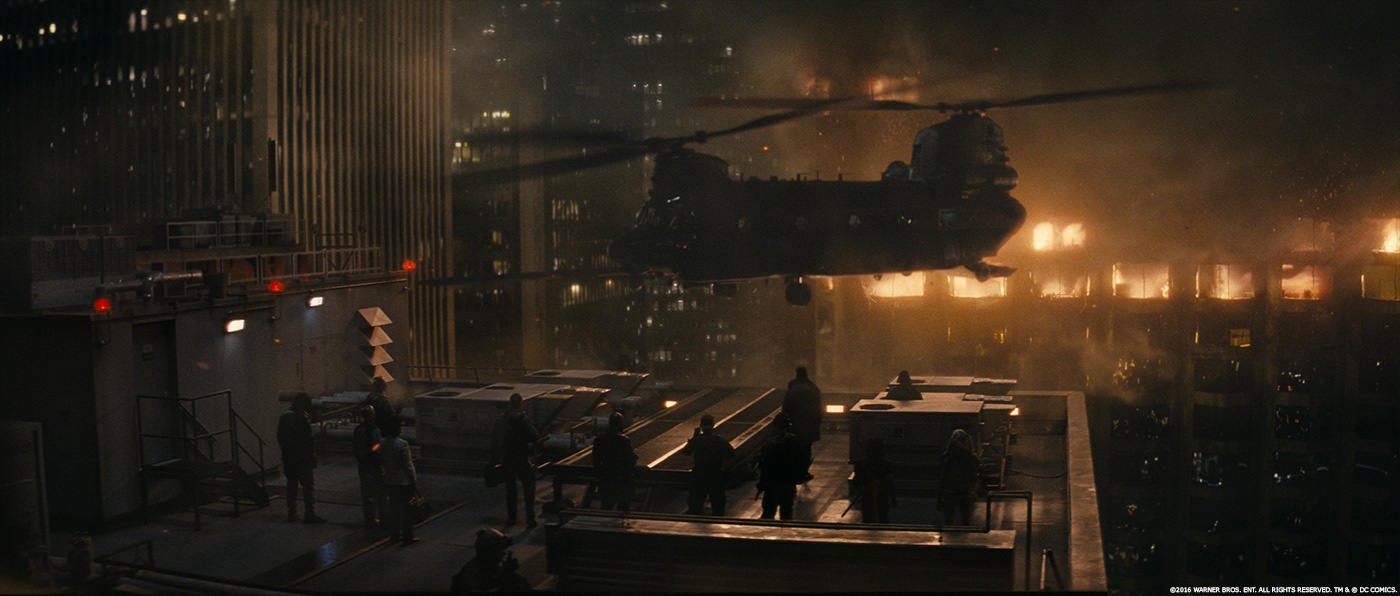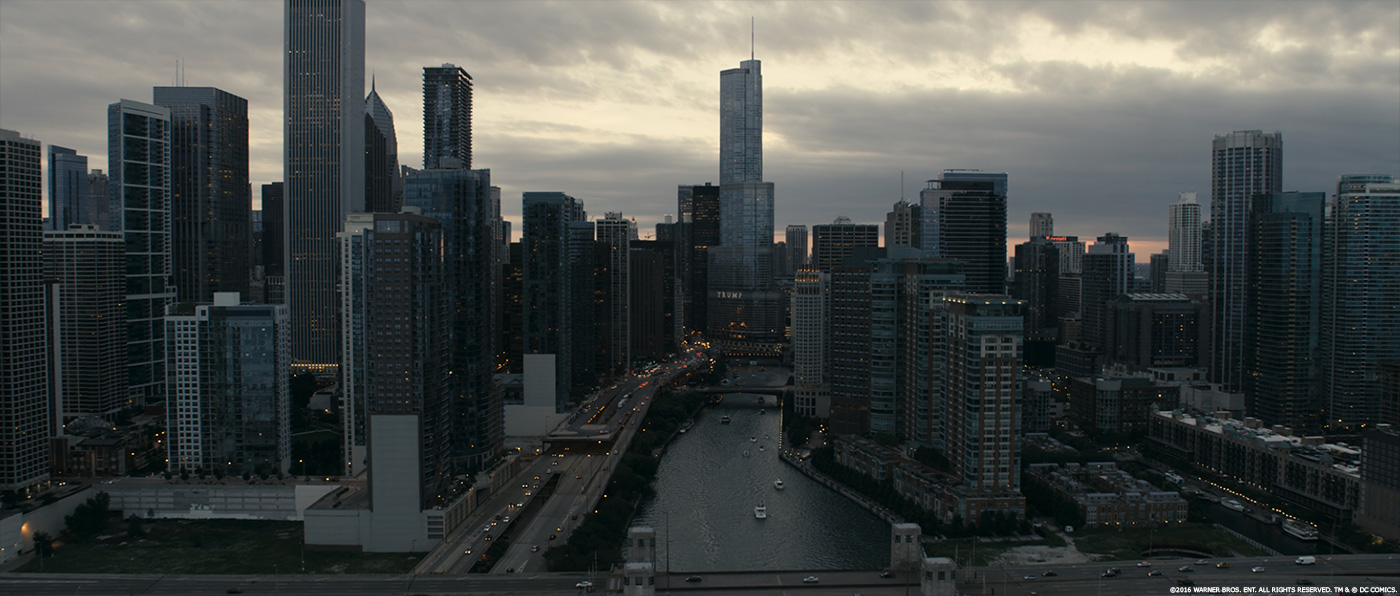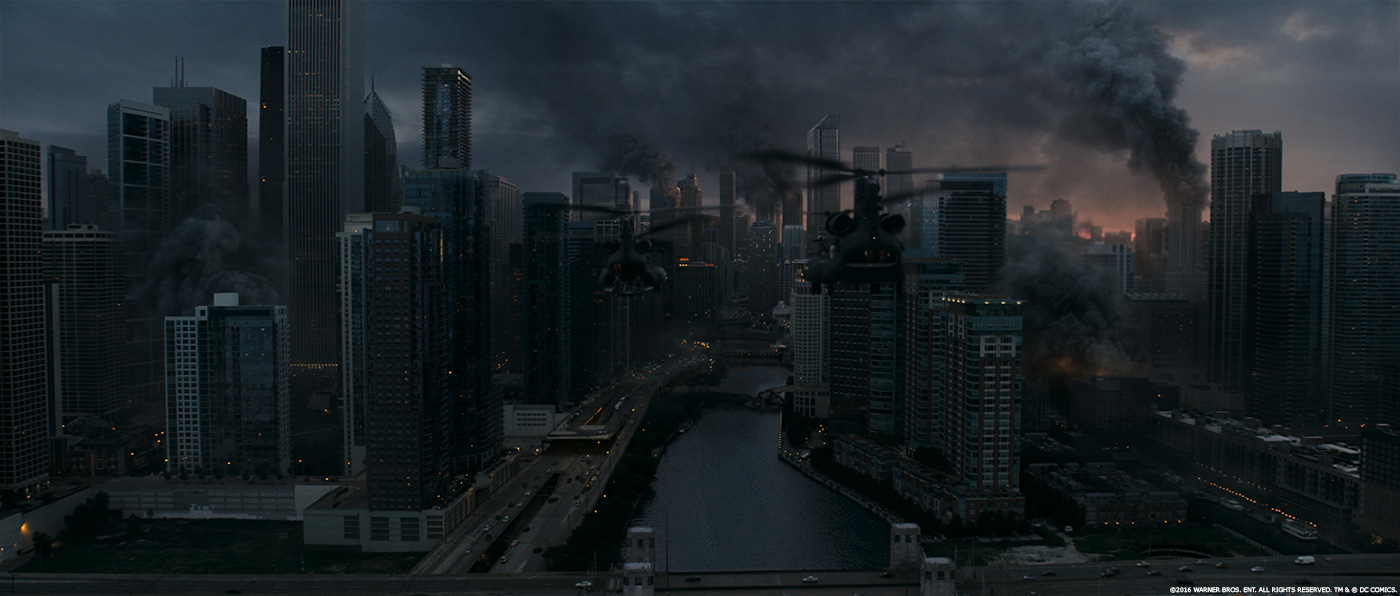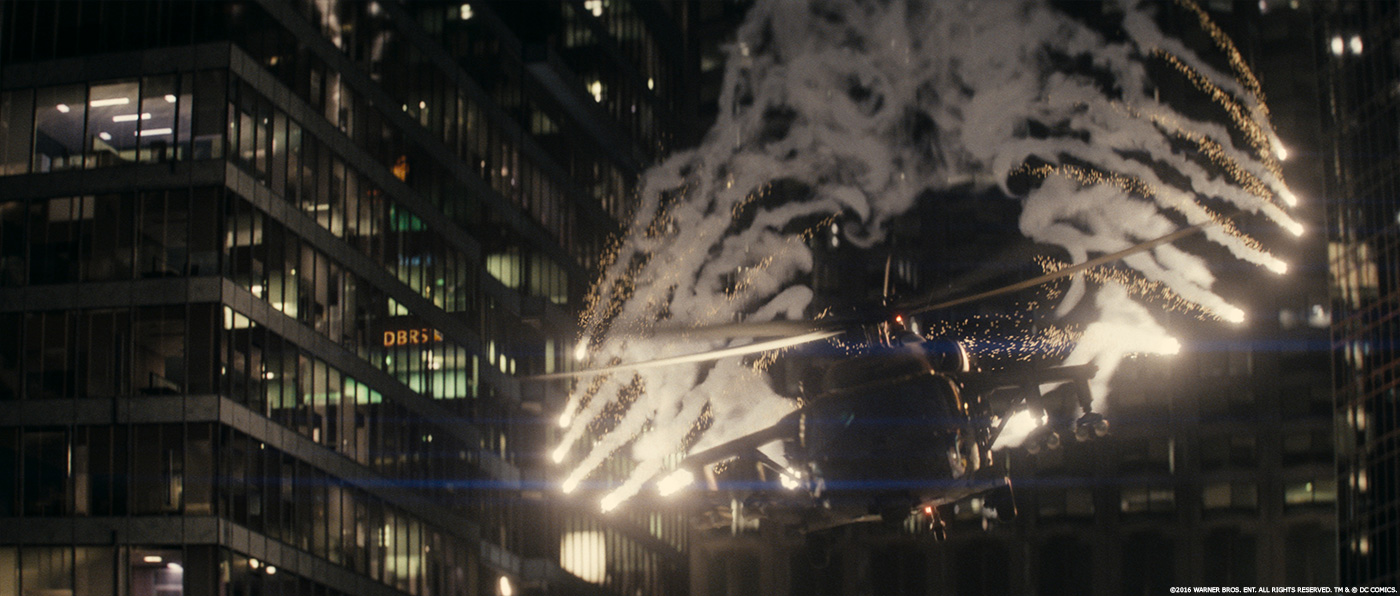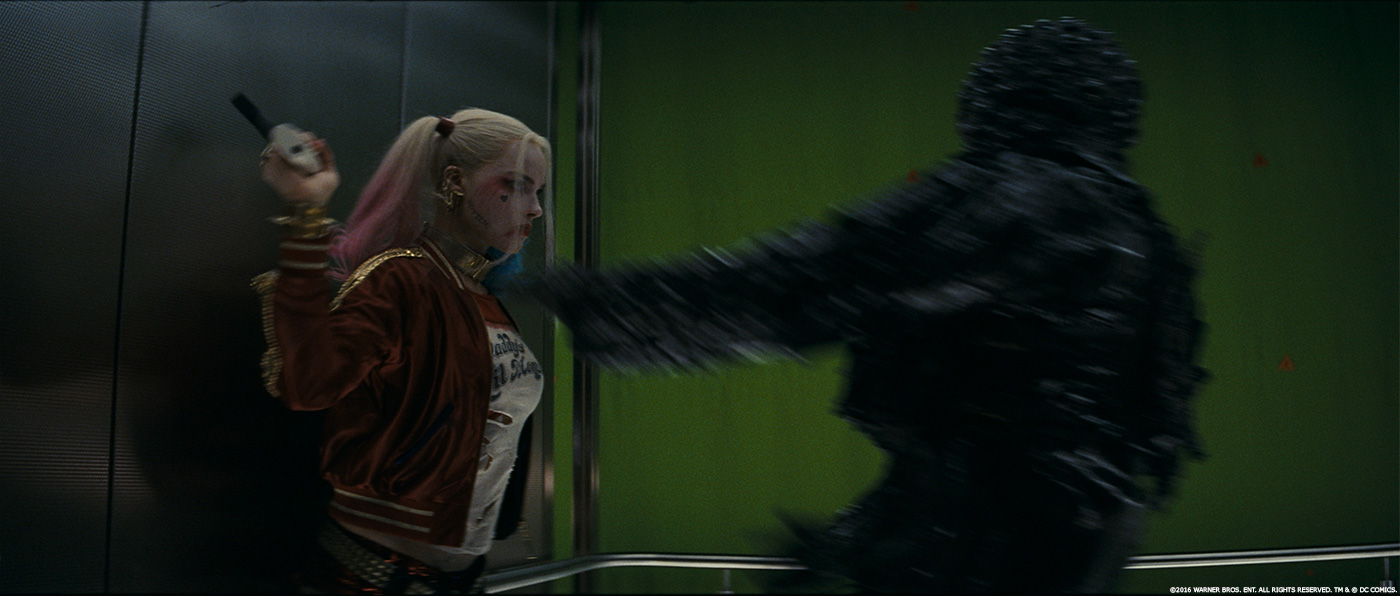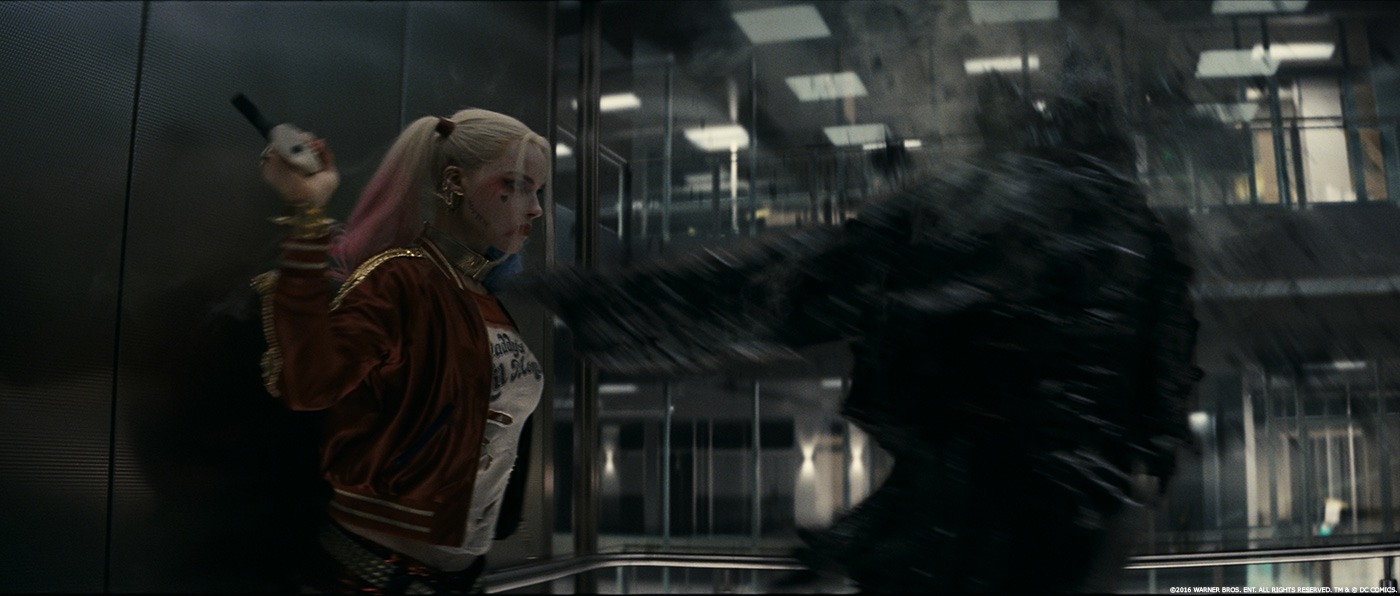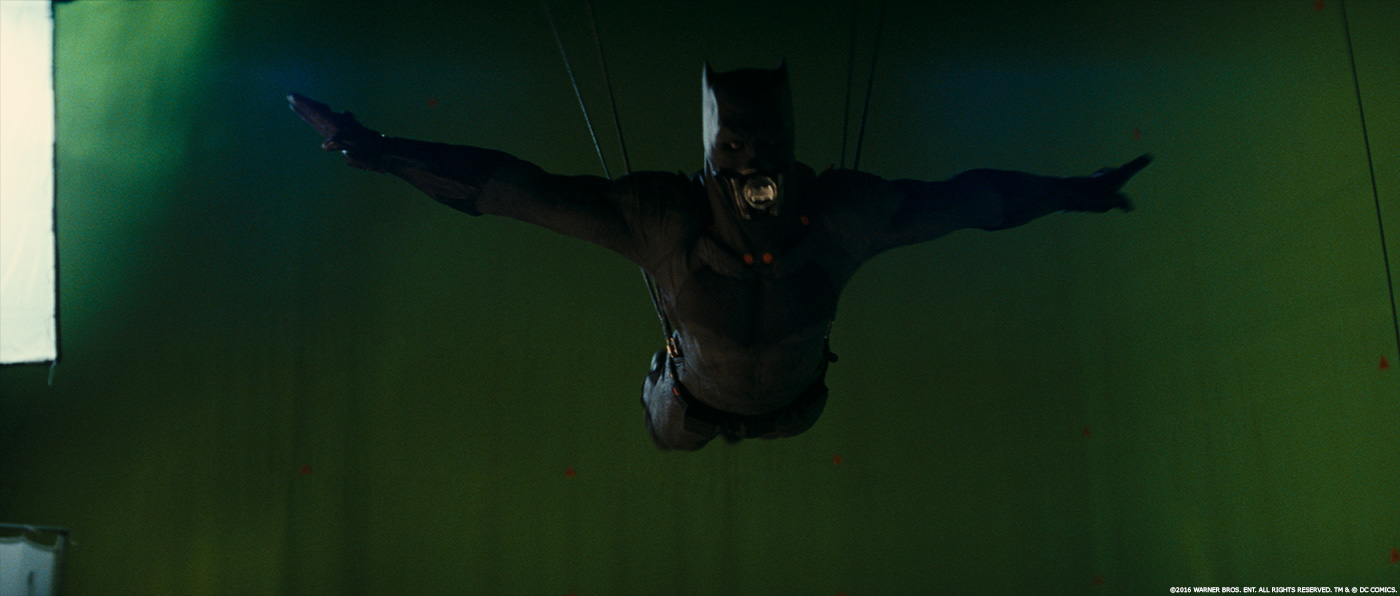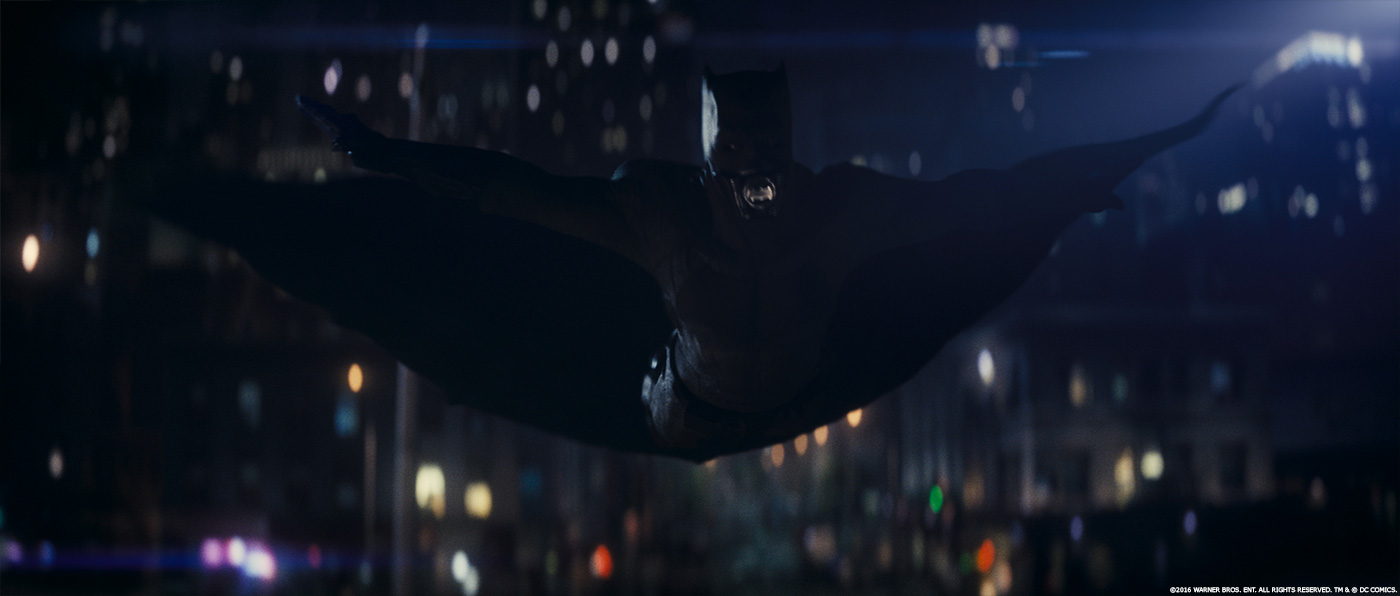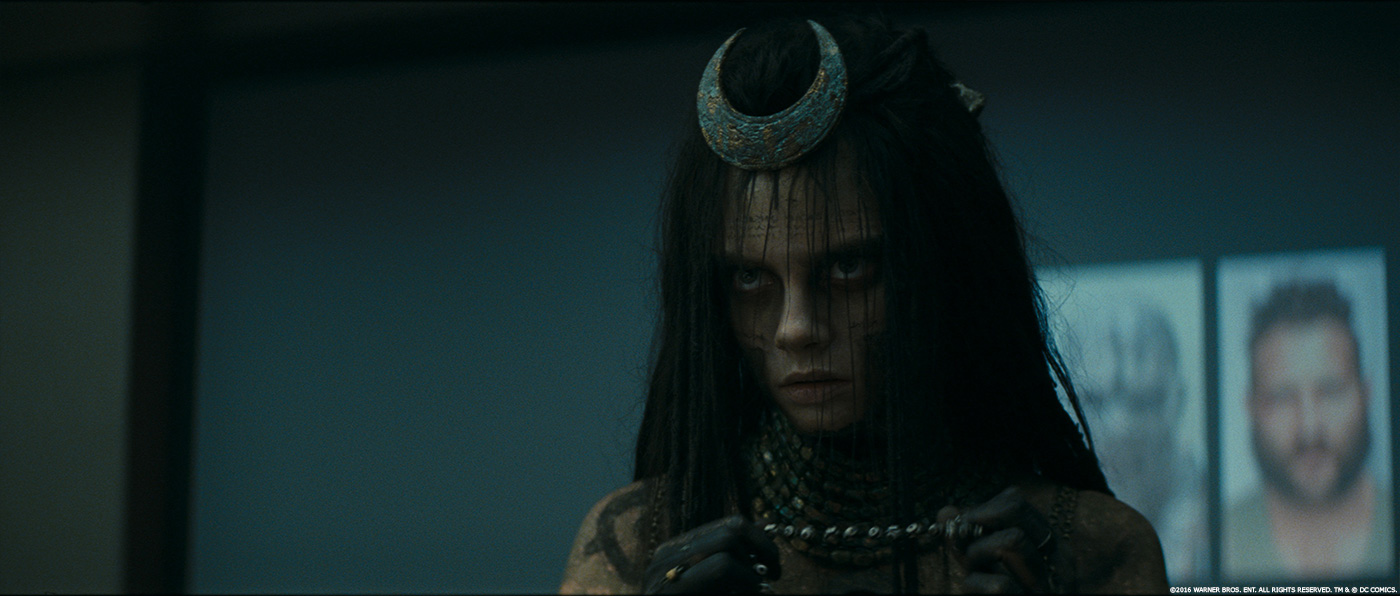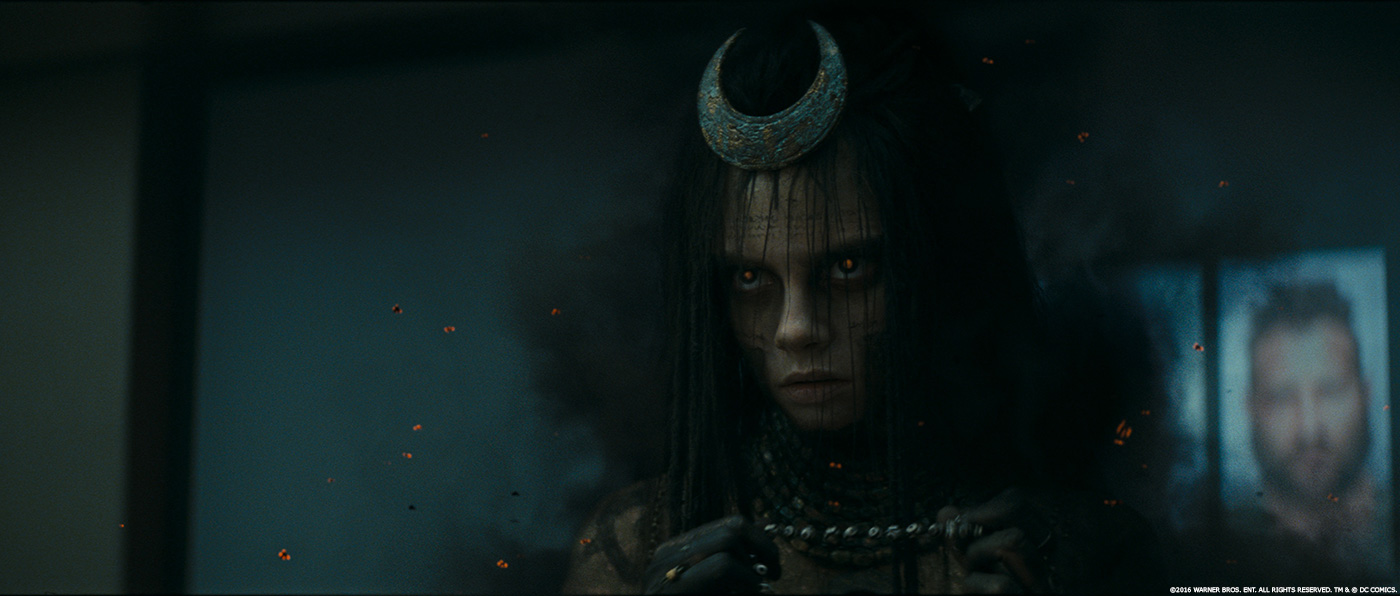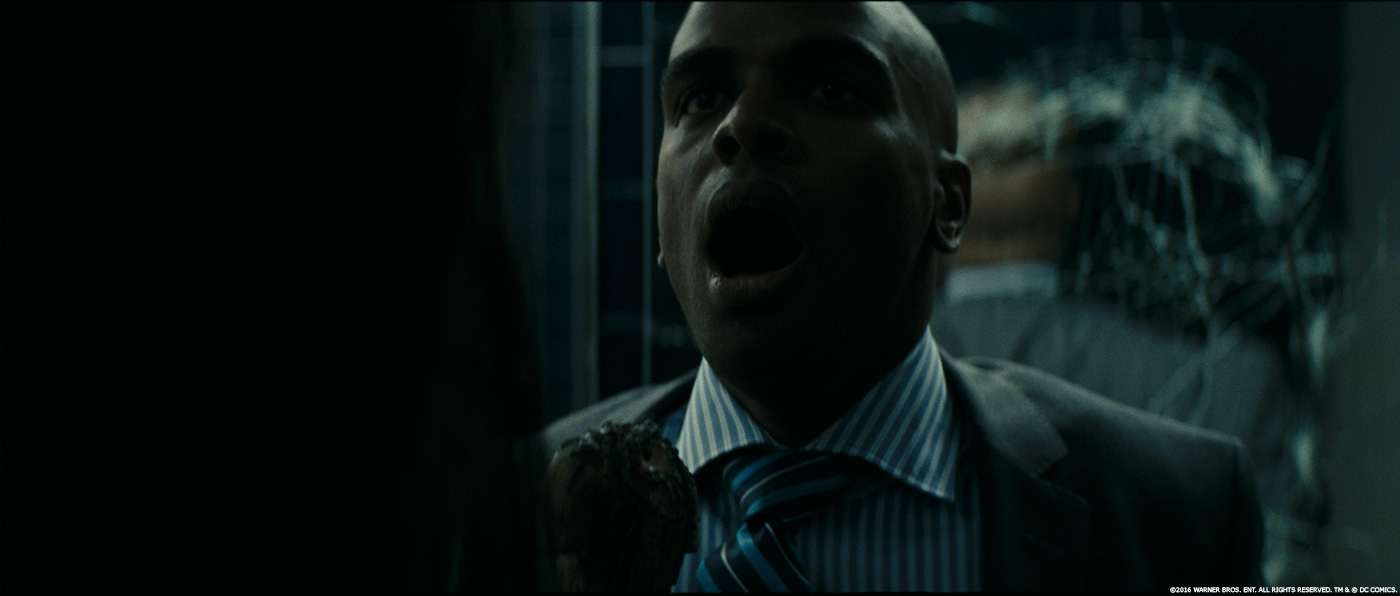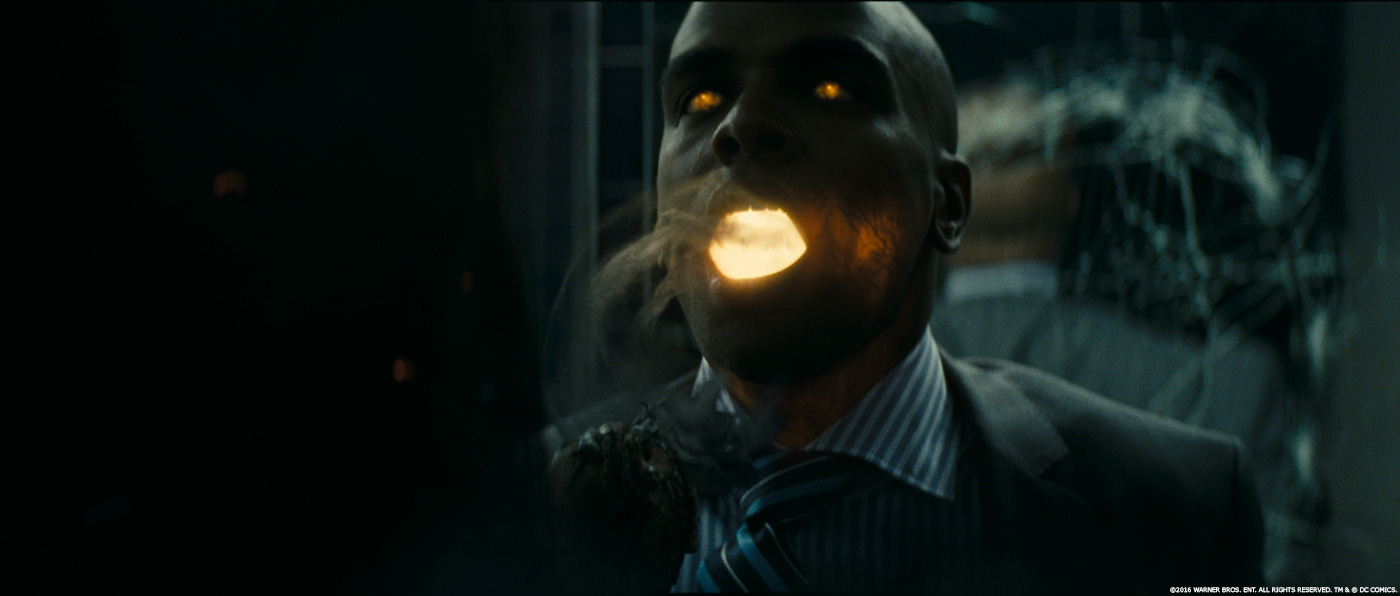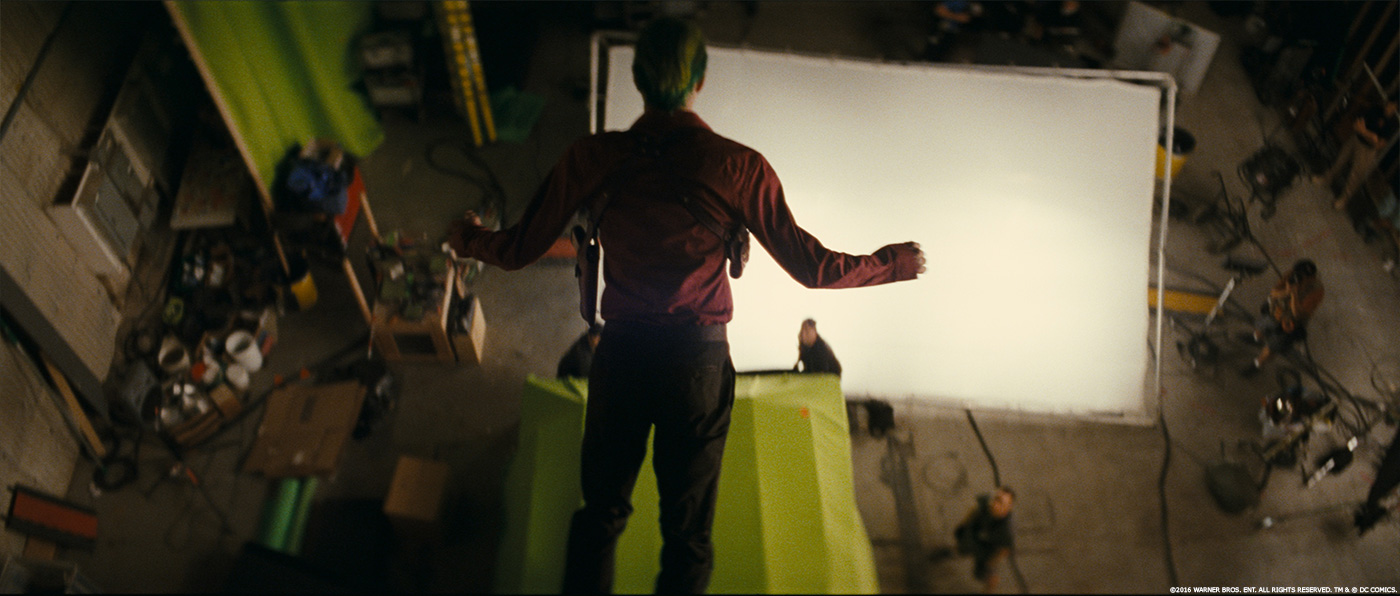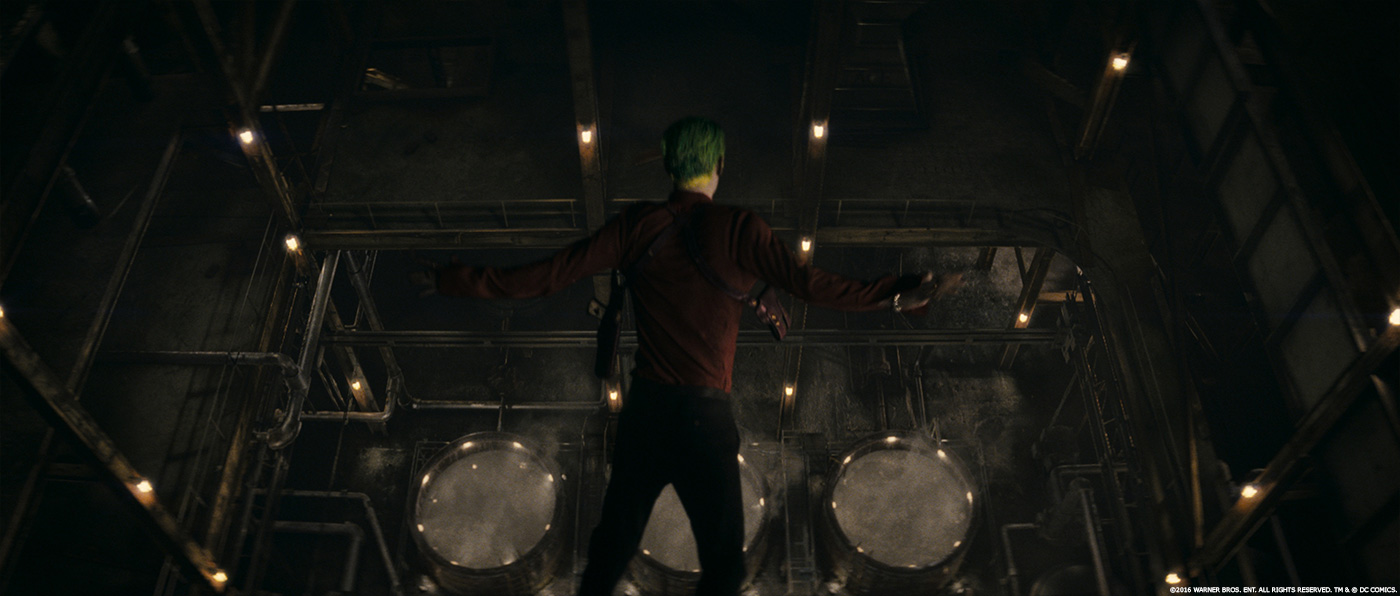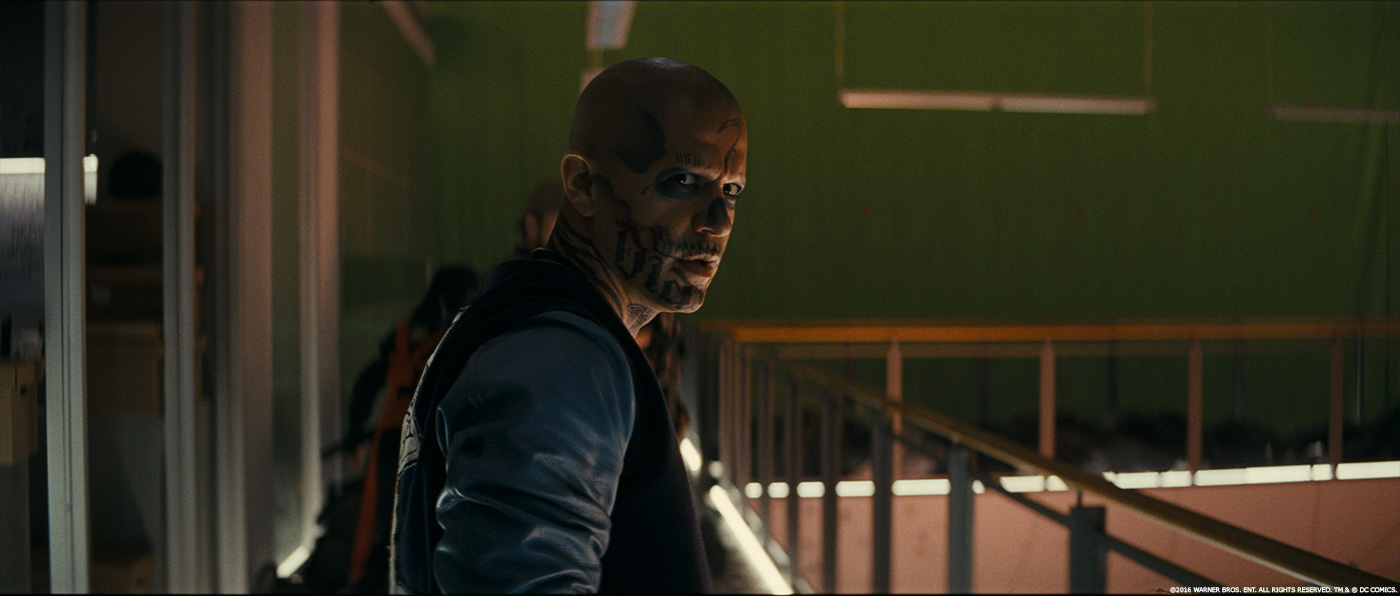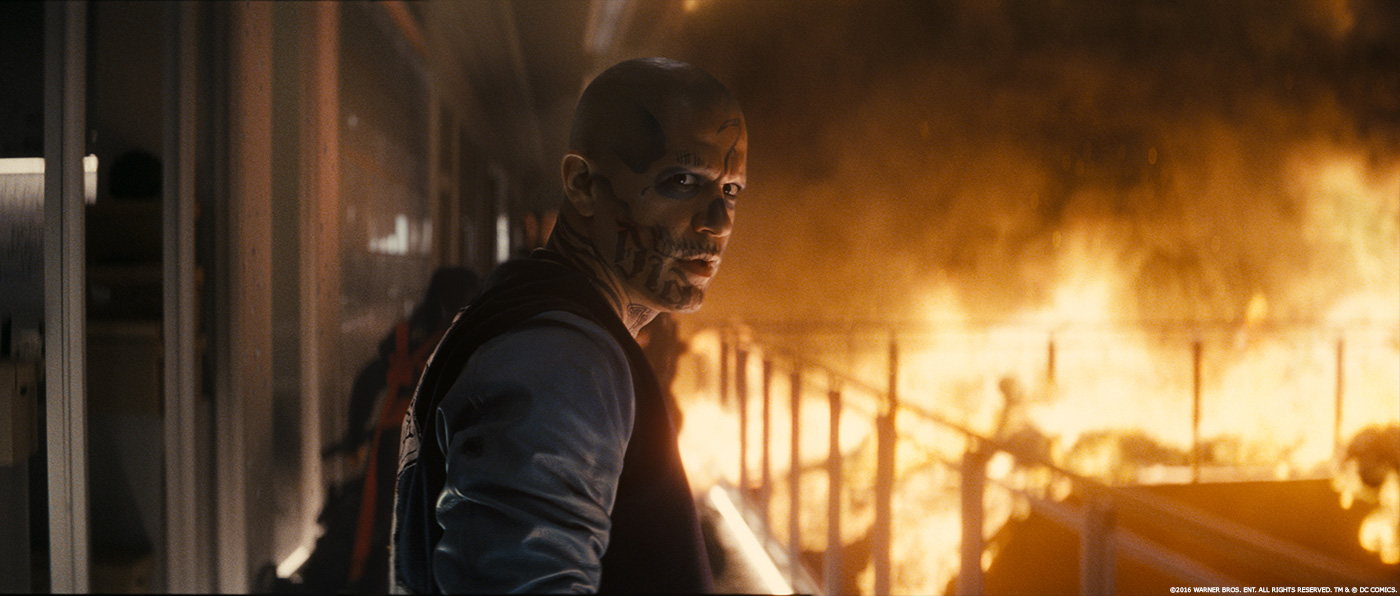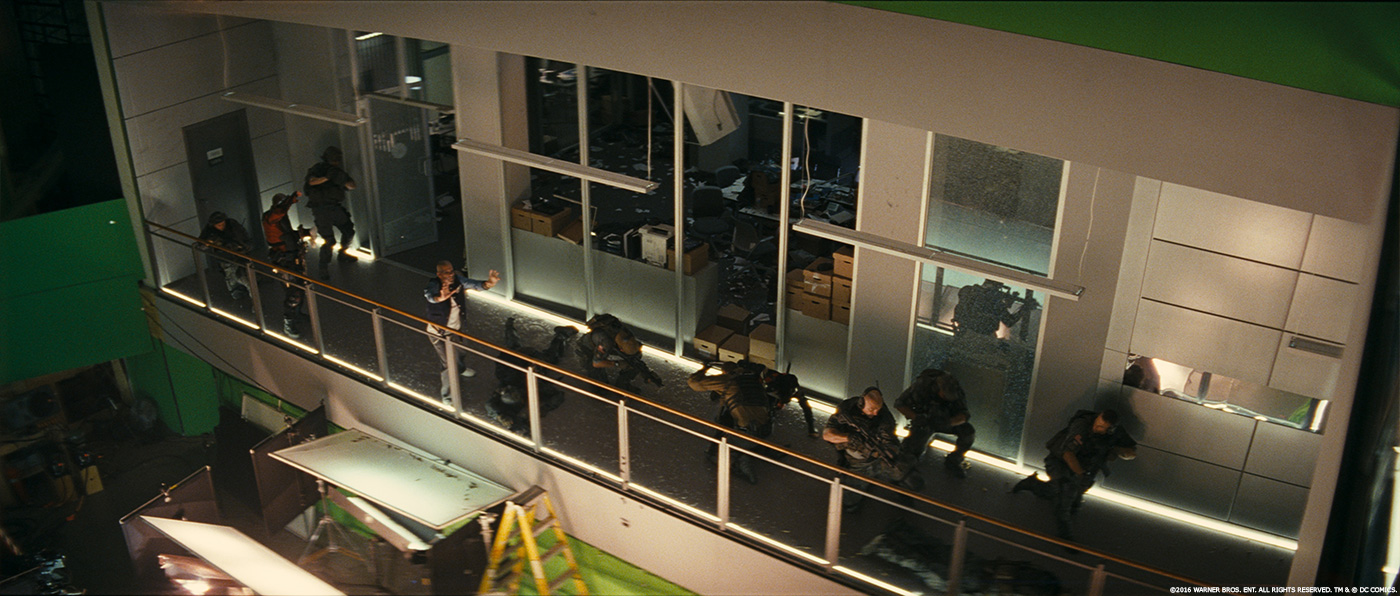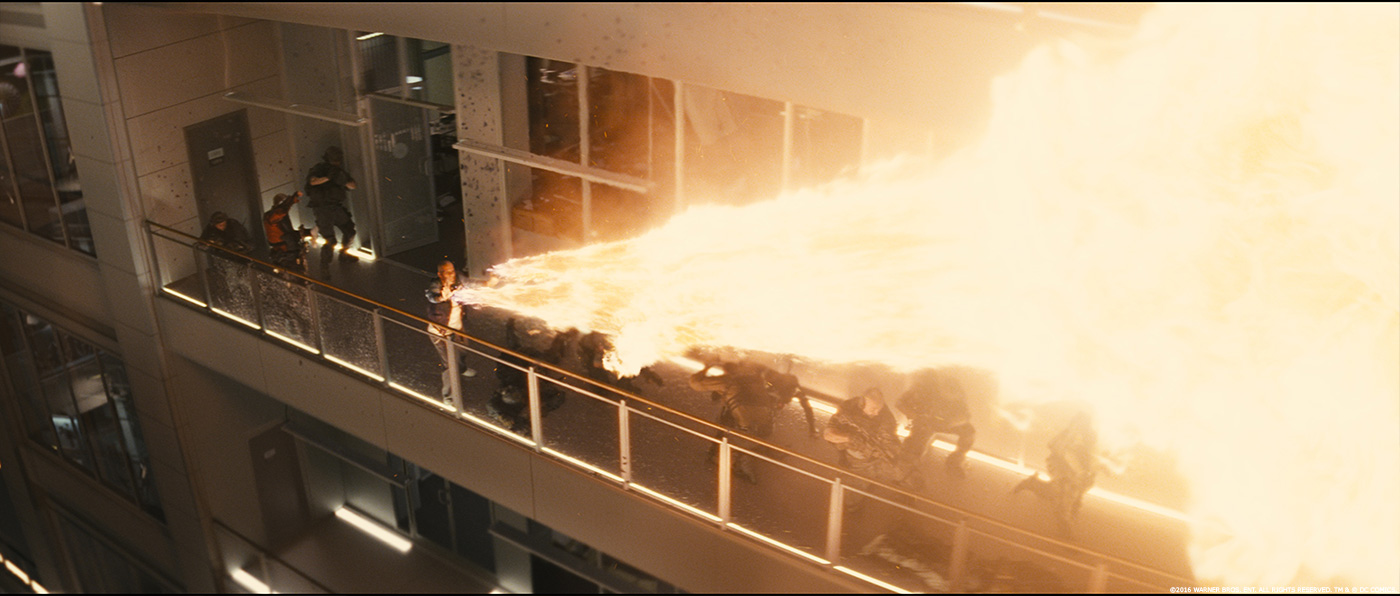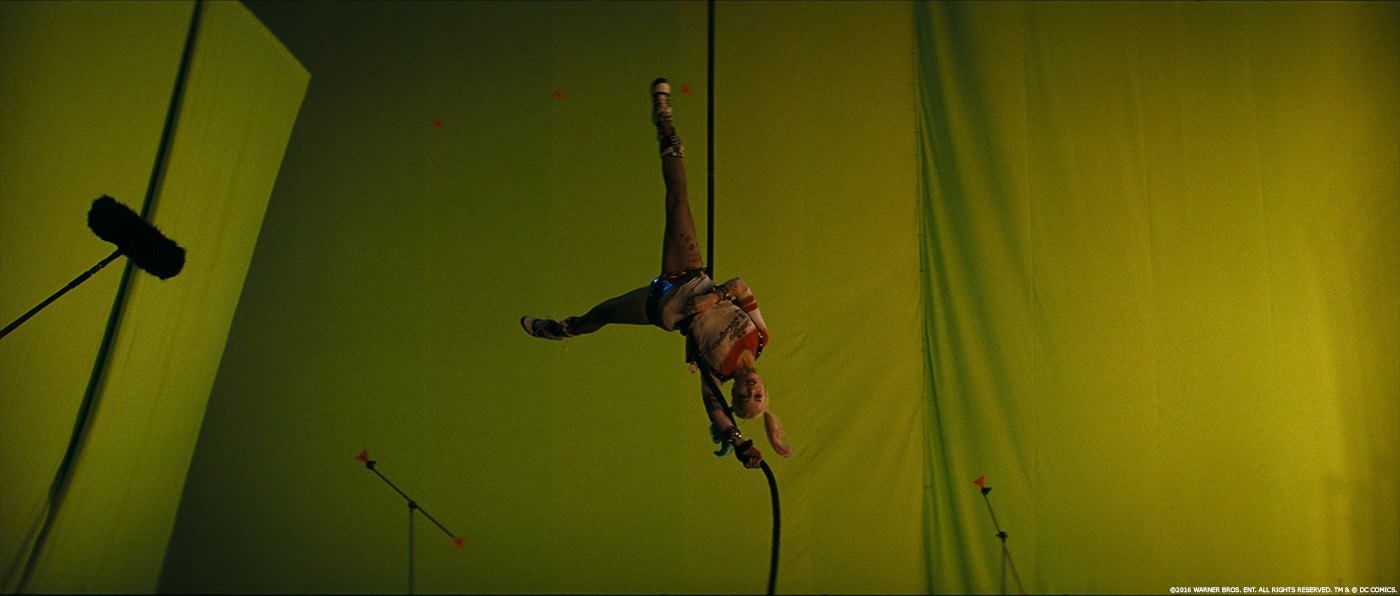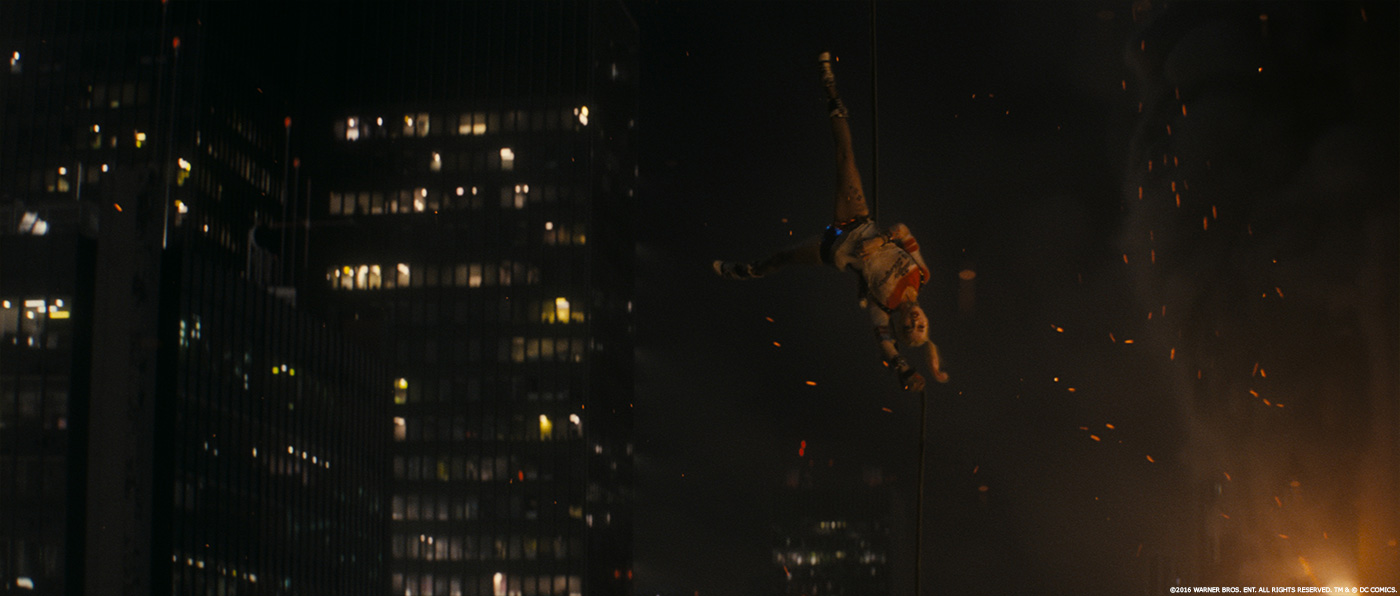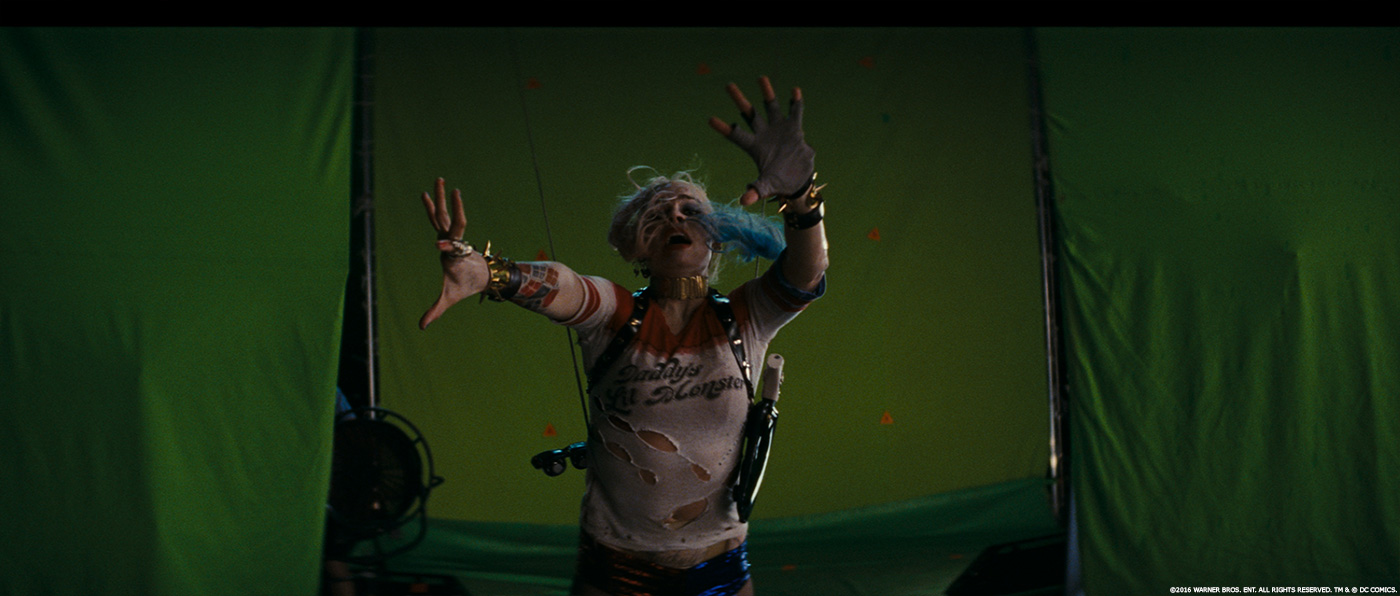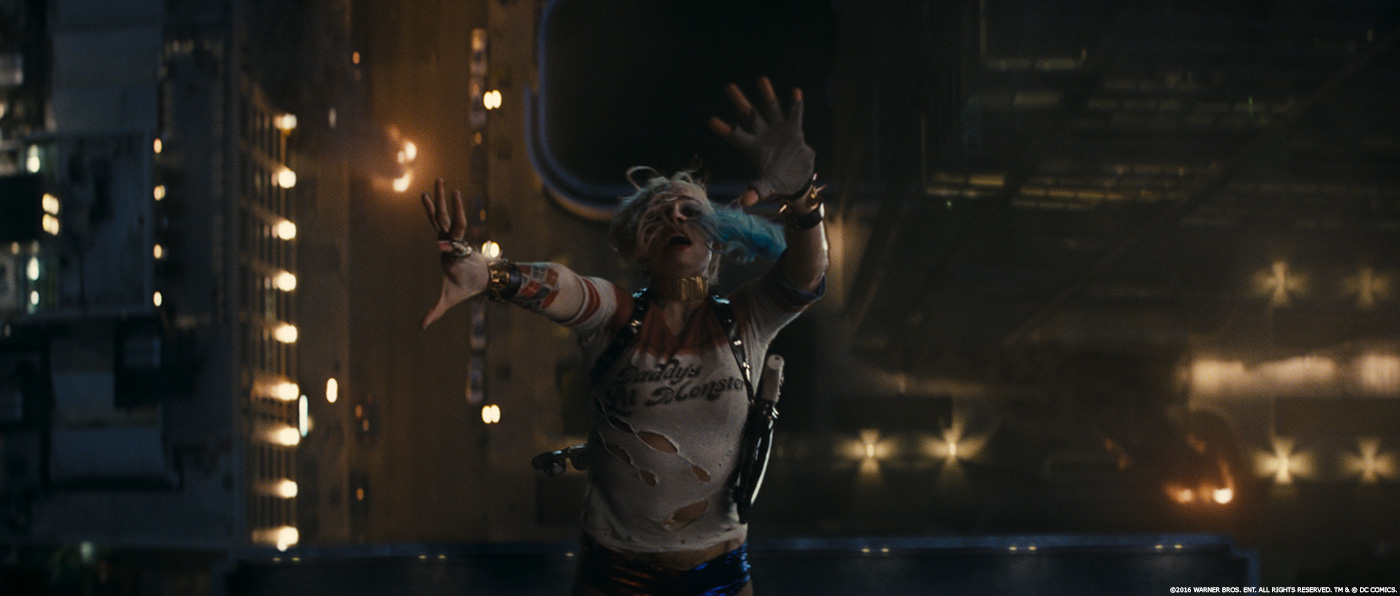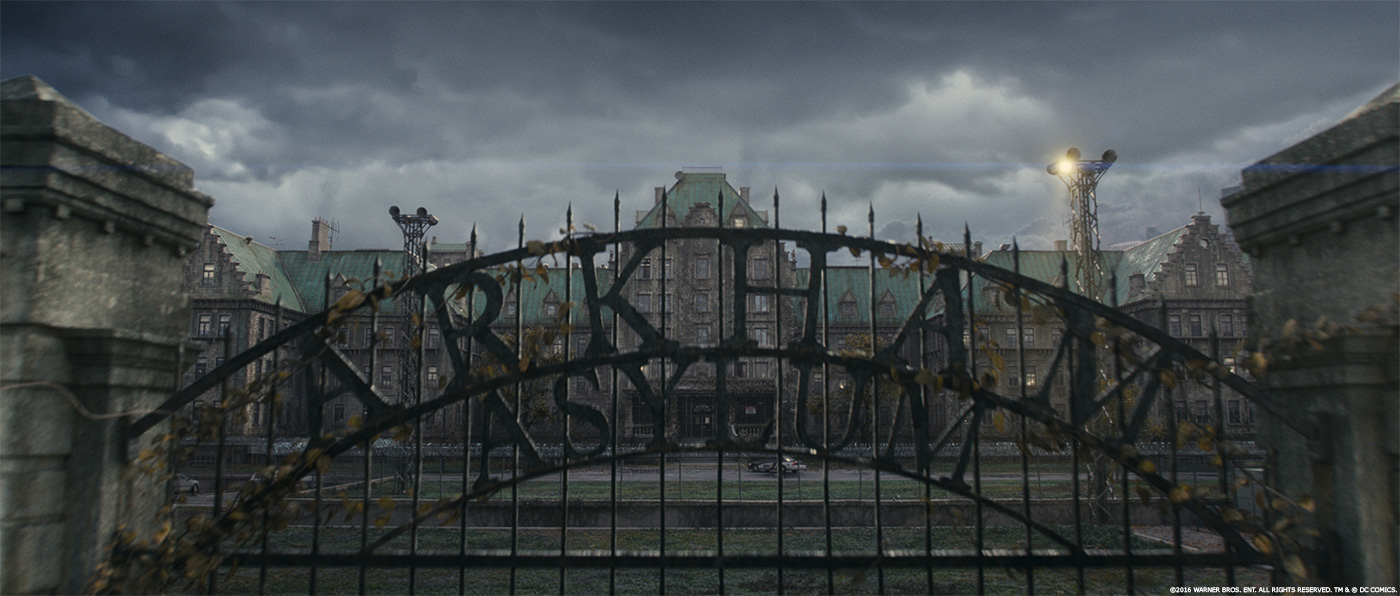In 2011, Seth Maury talked to us about the work of MPC on SHERLOCK HOLMES: A GAME OF SHADOWS. He then took care of the visual effects of MALEFICENT, NIGHT AT THE MUSEUM: SECRET OF THE TOMB and THE FINEST HOURS.
How was the collaboration with VFX Supervisor Jerome Chen?
Jerome was great to work with. I’ve known Jerome for about 17 years now; we first worked together on STUART LITTLE, back at Imageworks in Culver City. Jerome gave us a lot of creative freedom; we would get the brief on a shot or an idea, then we would have latitude to come back with ideas or options on what a certain effect or action could be.
What was Jerome’s approach to the visual effects?
His approach to the visual effects was that it should all be grounded in reality, even when fantastical.
For instance, the Ring of Debris electrical activity was based on tesla arc reference we found of similarly shaped items. We often went to practical reference for inspiration. Jerome’s overall approach is that the VFX need to serve the story and to help tell the story, first and foremost.
What are the sequences created by MPC?
MPC was involved in many sequences, the main ones being the Ring of Debris FX, the burning federal building, the cubicle and office battle with Chivo, the enchantress aura, and the first mission helicopter approach to the city and the following battle. MPC was also responsible for the CG EA’s, as well as many set extensions throughout the film.
The movie takes place in various locations and environments. How did you extend and create them?
Some environments were partially built sets, where we would top up the second and further stories, such as in the office fire battle with Chivo. This was done as a mix of a 3D model for the main extension of offices and cubicles and 2.5D projection of the city beyond. Multiple layers from lighting were delivered to compositing; so that compositing could have full control over animating the action and timing of the lights on to the environment from the muzzle flashes and tracer fire. The bullet hits and various debris were done as choreographed, per-shot.
Other environments were aerial city plates that we altered by removing signage and adding in more buildings into the skyline, to make the city larger and more dense. These were mostly done as a 2.5D environment projection setup, using material from panoramas shot from rooftops and ground level from Toronto and San Francisco.
How did you create the helicopter crash?
There is a scene where the chinook helicopter crashes on its way to delivering the Suicide Squad team into the city. Clean plates were shot of a dressed parking lot in Toronto. We first created a single shot of the beginning of the crash for an early trailer, and then that gave us the feel for the rest of these shots.
The helicopter was animated through the scene, eventually rolling to a stop at the end of the beat. Then came the CG FX, made up of a burning engine, billowing black smoke, and ground destruction from the impact and roll. We passed this to comp to block all together. Then as a last pass, once the anim was approved, we sent the model through tech anim to crush and deform the chinook as it rolled. Then this updated set of passes was given to comp to put together again.
Can you tell us more about your work on the fight sequence of Harley Queen in the elevator?
Plates were shot of Harley fighting with a practical actor in an EA costume. Our goal was to replace the heads on these practical actors so that the eyes on the head were alive and blinking during each shot, and so that the head breathed and pulsed.
The head, shoulders and body torso were roto-animated, so that we could replace with the CG version. Then we came up with different eye-blinking styles for each head in each shot, depending on what fit the action or framing, whether it be a wave from front to back of eyes opening and closing, or that action entered around certain pivots. We created a magnet-type system, where the anim rig had controls to influence a variable radius around the locator. This gave us the ability to create emotions through the types of blinks and open/close patterns, whether surprise or fear or determination, etc.
The funnest part for me was blowing up an EA head, as happens a few times in the elevator scene, and other times throughout the film. We gave each head it’s own style per shot, whether large bits or small bits of debris, or all the mass going up or sideways or spreading spherically like a firework. The idea for the heads is that they were organic and moved and deformed in a human style, but once destroyed they became rigid and exploded like rock, concrete and glass.
Batman is making few appearances during the show. How did you use your asset from BATMAN V SUPERMAN?
We used our Batman asset from BATMAN V SUPERMAN for a few shots, like the shot of Batman diving in to the water to chase after Joker and Harley in their car. There was a practical production plate of an actor diving, which we did start with. But then we decided that since we had the asset, it would be more effective and convincing to do the shot all-CG, since all the lighting could more easily match together. We roto-animated the practical actor dive, so that the two were nearly identical side-by-side. It’s nice to be able to have that kind of flexibility to execute the shot in the way that will make it work the best in the end as a shot.
Your sequences involved many FX and destructions. Can you explain about their creation?
Our FX were done in a few software packages: Kali, a proprietary MPC destruction tool, driven by a FEM engine, Maya, Houdini and also fluid sim software for liquids, smoke and fire. Many shots were bespoke effects, but we also created libraries of generic fire, smoke and dust elements, rendered from multiple angles, given to comp to be used however they could.
How did you split the work amongst the various MPC offices?
The main shot work was split 50/50 between MPC Vancouver and MPC Montreal, with each site doing about 300-350 shots. MPC London and MPC Bangalore were responsible for most of the hard surface and character asset builds.
Did you share assets with the other vendors and mainly with Imageworks?
We shared assets with Imageworks mainly. There were also some FX dev that we needed to share; we both had shots with Chivo in them, so Imageworks sent us some dailies of WIP FX they had developed, and then we would talk back and forth about technique, and then we would go back and recreate something similar within our system. And vice versa for the Ring of Debris for Imageworks. We started out doing the dev work on how the electrical systems worked, and how the flow of debris moved, and passed those ideas on to Imageworks to integrate into their shots.
Was there a shot or a sequence to prevent you from sleep?
We always have an in-house guessing game of which shot will be the last to deliver, and it’s usually not the one you think; it usually ends up being something kicked back for some unforeseen reason. Having said that, this show didn’t have much that kept me up at night.
How long have you worked on this show?
I was on the show for about a year, with some overlap at the beginning with THE FINEST HOURS, which I was in post on when SUICIDE SQUAD started shooting.
What was the size of your team?
The team was made up of Producer Doug Oddy, Production Manager Aoife Hodnett, coordinators Toby Windblad, Megan Wong, and Romel Catap. There were about 100 artists locally, and about 250 worldwide at MPC by the time we were done.
What is your next project?
I’ll be working on JUSTICE LEAGUE for Warner Brothers.
A big thanks for your time.
// WANT TO KNOW MORE?
– MPC: Dedicated page about SUICIDE SQUAD on MPC website.
© Vincent Frei – The Art of VFX – 2016


